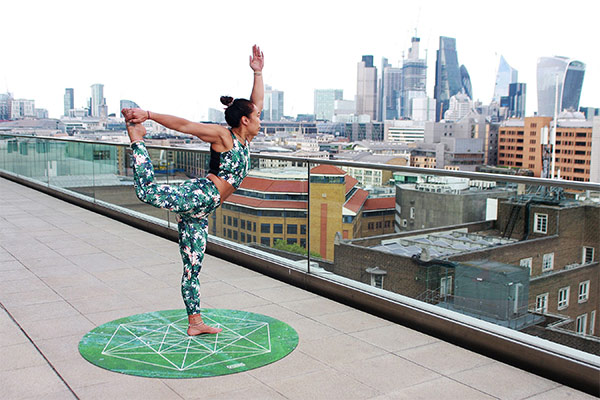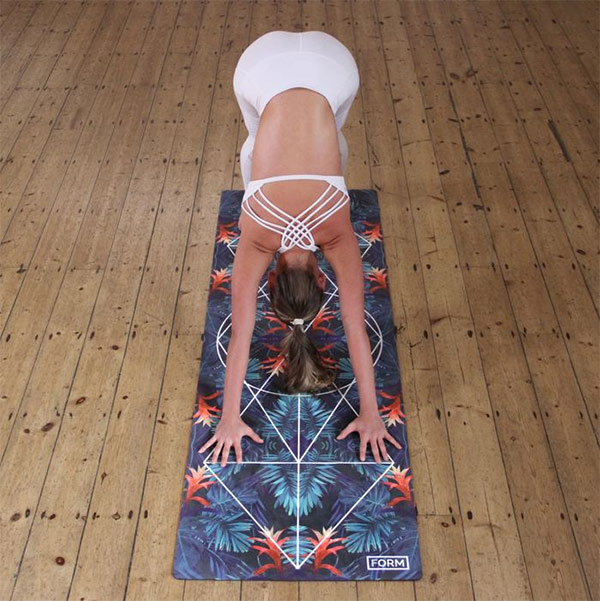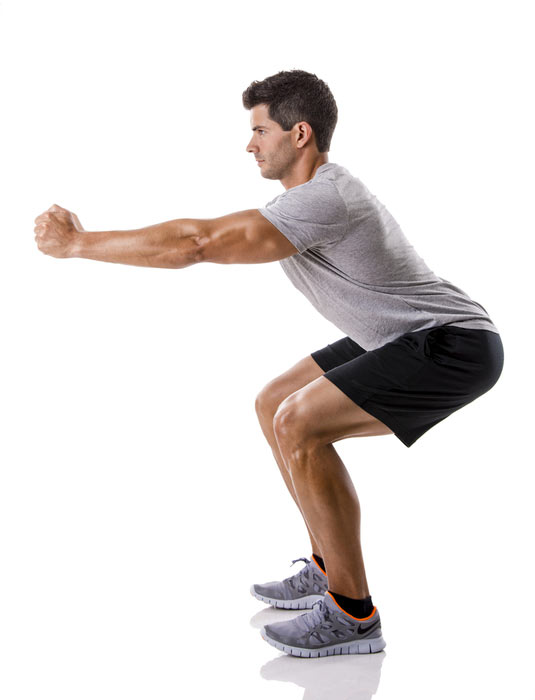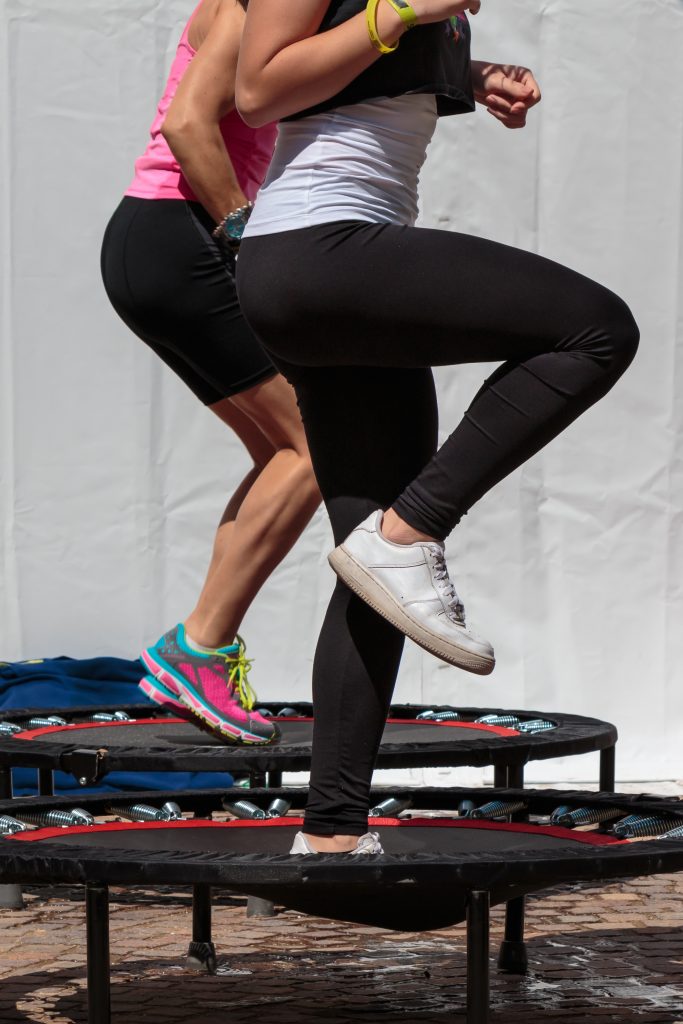
The balance of a joint is one of the key factors in the injury risk over time. If you have poor joint balance, you’re going to risk your joint’s wellbeing, and potentially the overall quality of the movement from that joint.
Today we’re going to discuss what joint balance is, why it matters, and what you should be doing to keep your joints healthy and balanced. Read on if you like not being injured…
What Is Joint Balance?
By joint balance we’re referring to a few things that feed into the overall demands on a joint and the resting/active positions it maintains. The positioning of joints in sockets – as well as the demand of muscular and connective tissues on the joint itself, are the main units.
The most common concern for muscular balance is an excessively tight or an excessively weak muscle/tendon complex. This is the kind we’re going to be addressing primarily, but other issues like fascial thickening and calcification could be a slower, more physio-intensive case for joint imbalance.
Inhibitions in the joint are going to show up in other ways, too – and you may not realise that joint balance in one joint is affecting another. These can add up rapidly: joint imbalances in the elbow, for example, show up in the balance of the shoulder through the bicep and its tendon.
These imbalances – whether they show up in ROM or joint positioning or performance – contribute to a number of problems. Let’s take a look at why they matter, and what these issues mean for you in the real world.
Joint Balance As a Factor in Most Significant Injuries
One of the common issues that make joint balance a relevant concern for your life is the role it plays in the development of chronic and even instantaneous injuries. In many ways, this distinction is probably a false one: tendons are strong and instantaneous injury requires enormous loads.
The likely factors in the development of problems like shoulder injuries and the ever-present SLAP tear is the progressive degradation of the tissues in the joints. Equally, poor joint balance shows up in common issues like impingements of the shoulder (especially sub-acromial) and bursitis.
These are common problems in the hips, too, and joint balance issues like these are known to be both common and solvable. They’re issues that don’t need to be there, if only the joints were taken care of more effectively.
The inhibition of the shoulder and hip joints are the most common examples of joint imbalance, because they’re the highest range joints in the human body. However, ball joints aren’t the only ones that experience injuries and chronic problems in relation to joint balance.
For example, the knee is commonly injured in response to the 3-dimensional demands of the hamstrings, quads, adductors, and calf muscles. The imbalances around the knee are common factors in the development of common athletic injuries like tendinitis and other dysfunctions.
This applies to every articulate joint – these are just the examples that get the attention – that you may be familiar with. The cause of these problems – and the reason they’re so persistent – is a simple one…

Joints Never Move In Just One Direction
The fundamental problem that we have with the way that joints work – that causes joint imbalance, but also a wealth of other performance and injury risks – is the idea that joints can be affected by just one side.
The reality couldn’t be more different: joints always move from the antagonism of muscles and other tissues on every side at once (either through muscular or spindle activations). The problem is that you’re probably treating movement as the result of one side of a muscle at the cost on a more complete, healthy approach to movement.
That’s not a personal criticism: the way that we treat joints and movement in the fitness culture is the problem!
Even exercises as seemingly simple as a bicep curl are best performed – and almost necessarily performed – as the simultaneous lengthening of the tricep/contraction of the bicep. Equally, the internal and external rotation of the shoulder occur in parallel and in contrast to each other.
This is the take-away point: there are never problems with just one side of a joint. The movements joints go through are always antagonistic – and you need control and strength in both directions, rather than just focusing on the bit you experience weakness/tightness in.
The process of establishing and maintaining joint balance is a simultaneous development of mobility, strength, and active control. This has to occur in the antagonistic pairs that work together in the joints to ensure proper joint alignment, balance, strength, and health.
The failure to make this happen in your own training is how imbalance happens and how it stays around. If you’ve experienced joint issues that persist for months or years, this is likely the cause: chronic problems are structural, movement issues.
How To Achieve Better Joint Balance
There are tons of ways you could potentially improve joint balance that range from massage to stretching to strength training and rehabilitation work. We’re trying to break it down into a very brief 4-step process that I going to work for most people most of the time.
Step 1: Strengthen Statically and Switch Everything On
The first thing you should be doing is spending time in the best possible position you can with isometric holds. For example, if you’re struggling with joint balance in the knee, you should try and actively build basic strength in key positions.
For example, a good leg extension hold can provide strength in the muscles, condition the tendons, and allows you to co-contract the hamstrings and quads. This kind of simultaneous antagonist activation is a great place to start and doesn’t even take much time/effort.
Other great examples include the active plank, hollow hold, side plank, and straight arm pull-down. There are tons of great co-contraction isometrics, but they depend on the joint and the muscles you’re looking to develop.
The general point is to work on holding postures that balance the joints and strengthen these positions. Strength is very specific – both to joint angle and muscle length – so putting time into the basics of joint balance is great.
This type of Isometric strengthening can also be a significant factor in managing existing pains or rehabbing chronic issues. This is especially true in areas like the knees, where problems abound and loading is high-repetition, chronic degeneration.

Step 2: Mobilize the Stiff, Strengthen the Weak
The development of proper joint balance should begin with the proper ranges of movement – and the reduction of passive tightness. Passive tightness tends to result from tonic muscles – the kind of ‘tightness’ that mobility and flexibility training aim to address.
This should be a consistent and progressive aspect of fitness and health for everyone. Cultural factors like extensive sitting and inactivity are serious concerns for the pliability of muscles. This is one of the key factors in the demands placed on either side of joints in a passive, rested position.
Think of it this way: the muscles and tendons are like elastic bands attached to the joints. The tighter the individual bands, the more a joint is likely to be pulled in that direction. The tonicity or ‘tightness’ of muscles and their respective connective tissues can be reduced.
This kind of immediate relief is the place where the proper joint balance adjustment begins. There are a few simple layers to this process that you should aim at reducing persistent static issues and then working your dynamic range of motion.
Static stretches and foam rolling are primarily ways of addressing short-term discomfort and contributing to better long-term mobility. These methods allow you to move through longer ranges more comfortably and, thus, contribute indirectly to the development of better joint health and mobility.
This section can take a while but lots of consistent, daily work can make a significant change. Weighted stretches also offer a great way of expediting the process and develop mobility in joints while forcing yourself to be active and balancing antagonistic muscles.
Step 3: Mobilize Both With Strength in End-Ranges
The proper development of joint balance requires the development of strength in weak link positions. For most of us, this means end-range of a movement, where the stretch reflex takes over.
This is another reason why weighted stretches are one of the best mechanisms for overall development. They ensure strength in the positions that are so often most injurious and likely to contribute to joint imbalance. These challenging positions are most in-need of conditioning.
Equally, one of the possible risks for joint imbalance s the improper training of a joint’s range of motion. Full-ROM and partial exercises are both pretty common and there’s always a discussion about which is superior.
The most important aspect of full vs partial ROM exercise for joint imbalance is that you do both. The end-ranges are crucially important for stable, controlled development – this is one of the factors that influences the health in tendons and muscles.
End range movements are going to be key and you can start with something as light as a resistance band or dowel rod. Some movements can be conditioned with resistance this slight, depending on your experience and the stage in the development of your confidence in a range of motion.
Speaking of sitting and immobility, the reverse lunge with proper hip extension and flexion is great for strength, mobility, and joint balance. This is a good example, but you can find equally good exercises for pretty much every joint:
Slowly accumulating volume in positions that challenge you – in both directions on the joint – is the key to building sustainable, strong joints. Remember to strengthen both directions of the movement!
Step 4: Maintain Consistent, Better Movement in Exercise
Once you’ve established mobility and control in both directions for the movements of muscles, the most important step is to make sure that you’re putting them to good use. The point is to use them in the same ways: controlled, full-range, and with an eye to proper positioning.
Whether you’re performing these movements for the sake of rehabilitating an injury or building better technique, the point is to use it. There’s no point making this kind of adjustment if you’re not directly applying it to your life and exercise more generally.
For example, building better joint balance in the knee is not a useful process if you’re not going to sustain it with good exercise technique and planning. The long-term developments through better movement and better training are the final step in joint balance.
To keep doing these types of movements and to invest time in ensuring you’re training muscles in a sustainable way. Full-range, technically-proficient, well-planned exercise is the best way to properly capitalise on better joint balance and ensure that it is put to work – but also persists over time.
How can joint balance help you? Here’s a quick run-through of the benefits you can expect from better joint balance. We’ve mentioned them in passing but it’s good to have a clear notion of the improvements you can action with something as simple as proper joint balance/control.

Reduced Injury Rates
Reductions in joint imbalance come with reduced rates of injury. The fundamental problems addressed with joint balance are risk factors in the injury of joints. Reductions in any/all of them contribute to a more resilient muscle-joint complex.
The improvements you make in joint balance keep you healthy – both during exercise and through the aging process. Any advantage you can give yourself is going to pay dividends in performance and longevity.
Improved Mobility
This is another factor in reduced injury risk, but also has direct benefits of its own. Joint imbalance is both the result of – and a factor in – reduced mobility. The development of mobility is a great target for your training since it’s one of the biggest deficiencies among the general population.
Loss of muscle pliability, joint range, and degradation of joints during the aging process really do add up. Maintaining flexibility and mobility are associated with better quality of life, longevity, and reduced overall fall risk.
Keep flexible and you’re going to perform better and be happier as you age.
Performance
Improving joint balance isn’t just a way of improving posture and longevity. We’re not doing this kind of training for the sake of it: it’s a way of learning to move more effectively.
The co-contraction exercises are a great example of this; improving the control over the joint on both sides improves force output. It also contributes to better technical positions and rhythm, which allow you to lift more weight with less difficulty.
The development of muscular coordination around a joint – and the stability during an exercise – are two of the key contributors to 1-rep-max strength. The improvements to joint balance come with their own performance benefits built in.
Closing Remarks
The balance of a joint is a factor in the health and performance of everything you use it for. Whether this is just everyday movement or high-level performance, the point is that you need a healthy and pain-free foundation.
Joint balance is a great focus for your exercise and can contribute to a host of benefits that we’ve only touched on so far. Joint injuries are stubborn, persistent, and really put a dampener on the quality of your life – any chance to avoid them is one you should be taking.
The steps we’ve suggested here are very general, but they apply in a number of interesting ways. If you follow the principles – above and beyond the examples – you can make a lot of progress in a relatively short space of time.
Remember the key points we’ve discussed so far:
1. Joint balance is important for staying healthy and performing well
2. Joints never work on one side – and you can’t treat them like they do
3. Start by strengthening the positions you want to hold and working on feeling both sides of a joint
4. Loosen the tight muscles, strengthen the weak ones
5. Move through full ranges of motion in good positions
6. Use exercise as a chance to practice and develop the joint positions and balance you’ve worked to build







